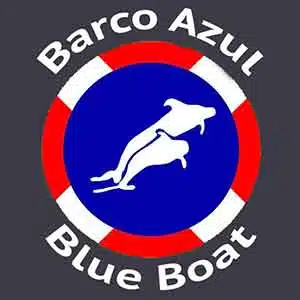Tenerife is the largest and most visited of the Canary Islands. Tourists flock by the millions from cities across Europe every year.
Mount Teide formed the island years ago. The resulting topography makes this one of the world’s prime whale-watching destinations.
While you enjoy a maritime tour in Tenerife to see whales and dolphins, Costa Adeje drops 2000 meters off the coast, forming the perfect shelf for our marine friends.
Many companies now offer tours to observe whales and dolphins. In 2-3 hours, you’ll have the chance to watch and listen to the different species. If you visit, a whale watching tour should be at the top of everyone’s to-do list.
Curious about how to plan and what to expect? Our guide gives beginners the information they’ll want to start planning their next trip.
Getting to Tenerife
There is no shortage of opportunities to visit Tenerife. The largest of the Canary Islands offers flights to and from major European cities. From the airport, visitors are very close to the two harbors offering whale-watching tours.
If you want to whale watch in Tenerife, visitors have no shortage of outdoor activities. Mount Teide and the beaches are two huge draws to tourists. The island comes well equipped to handle any kind of trip. Anyone visiting needs to book flights and rentals in advance. Their availability becomes scarce during the holiday season. With so many things to do beyond whale watching, you’ll want some flexibility around your stay.
What Species Can You See?
Pilot Whales
The second largest species of dolphins is a year-round resident of Tenerife. Pilot whales in Tenerife love the dramatic structure provided by the island. Shelves created by the island volcano hold plenty of squid and fish. The abundance of food enables them to live here year-round. Visitors should look for pods of 10 to 30 individuals cruising the coastlines.
Bottlenose Dolphins

These loud, chatty dolphins live in pods around Tenerife and usually get spotted on whale-watching trips all year-round as they are resident as well.
Bottlenose dolphins in Costa Adeje communicate with chirps, squeaks, and whistles. Dolphin noises are not limited to their communicative chatter.
The dolphins use echolocation to track and hunt their prey. By using subtle chatter, they can locate a meal.
The only way to hear these sounds is by using a marine hydrophone. Our tours offer the chance to use the hydrophone and experience their underwater communication.
Spotted Dolphins
Spotted dolphins are observed in Tenerife year-round because they swim in the warm waters around the Canary Islands. They are similar in size to a bottlenose dolphin but with a much thin and shorter beak.

Their coloration is also much different than any other species living around Tenerife. Black spots dot their silver-grey bodies,slim and very agile, the pods of spotted dolphins cruise the drop-off in pursuit of small fish. During our whale watching tours in Tenerife, we often see mega pods with over 50 of them.
Bryde’s Whales
The Bryde’s whale is the species of baleen whale we most commonly observe during our Tenerife whale watching tours. These whales are typically found hunting small schools of baitfish offshore, often in the company of dolphins and large groups of seabirds like the Cory shearwater and Yellow-legged gull.
Sperm Whales
Sperm whales love the deep trenches off the coasts of the island. The whales dive as far down as 2 kilometers hunting for squid. With such a steep drop off the coast, sperm whales come in and compete with pilot whales for squid.

Their echolocation is so advanced that the whales can hunt squids in the ocean darkness. Most of their noises only get picked up over a marine hydrophone, and guides will use them to locate whales for your tour.
In Tenerife, we have two resident populations of Sperm whales, one in the South-West and the other one in the North of the island. As they are deep divers, the encounters with them can be rare but always amazing when it happens as they generally are in family pods.
Best Time of Year to Go
The Tenerife whale watching season lasts all year round. Costa Adeje, on the southern coast of Tenerife, is home to large resident populations of Pilot whales and Bottlenose dolphins. These resident populations can be observed on our small group tours 365 days a year. One of the best things about the whale watching season in Tenerife is that every day is a great day to go whale watching!
Besides the resident Pilot Whales and Bottlenose dolphins, we encounter different species of whales and dolphins with varying frequencies. Both migratory and pelagic (open ocean) species pass through the deep ocean channel that runs along Costa Adeje.
The resident Pilot Whales are seen on 99% of our tours, and Bottlenose dolphins are seen over 70% of the time. There are resident Sperm whales in the Canary Islands archipelago and are usually seen a few days per month.
The Bryde’s Whale is another known resident species of the islands. This is the only species of baleen whale not currently known to migrate. Fin Whales have also been identified as regularly visiting the archipelago, and it is possible they reside here year-round as well. The best time to catch a glimpse of migrating baleen whales is during the winter and early spring months, but it is a matter of luck!

Visitors are fortunate and have the chance to observe whales year-round in Tenerife. The sub-tropical climate stays temperate and holds pilot whales off the coast.
November to February are the peak months for whale watching in Tenerife. Whale migration peaks in January and brings more species to the island. Whale watchers in these months have a chance to see Bryde’s whales and many different species of dolphins.
Blue Flag Certification
When visitors plan whale-watching trips, book a tour with a blue flag certification.
This certification signals to tourists that the boat gets run sustainably. Operators of these vessels stay committed to preserving the whale’s health.
Whale Watch Tenerife has all the authorizations regulated by the Ministry and the Government of the Canary Islands to respect and protect the populations of pilot whales and dolphins, promoting conservation, environmental education, and supporting scientific research. Anyone coming to see whales in Tenerife should want to see a thriving, healthy population. The best way to do so is by choosing tours that commit to sustainable practices.
 Booking
Booking







